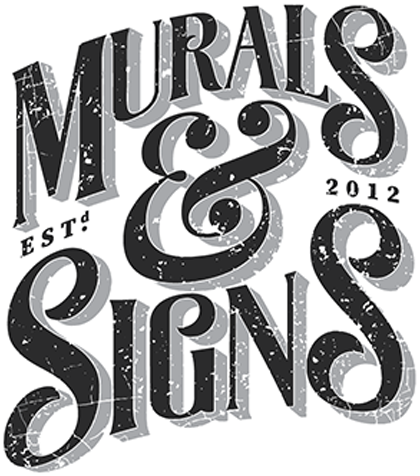Introduction
Embarking on a large-scale commercial mural project involves careful planning and accurate cost estimation. As an artist or business, it’s crucial to have a clear understanding of the expenses associated with such projects to ensure profitability and client satisfaction. This article dives into the intricate process of estimating costs for large-scale commercial mural projects. From materials and labor to additional expenses, we’ll guide you through the steps to create precise cost estimates that reflect the scope of the project and set you up for success in a competitive market.
Understanding Project Scope
Project Dimensions
The size of the mural plays a significant role in cost estimation. Measure the dimensions of the project area accurately, considering both height and width. Large-scale murals require more materials, time, and effort, which directly impacts the overall cost.
Design Complexity
Evaluate the intricacy of the design requested by the client. Elaborate and detailed designs may necessitate more time and skill to execute. Factor in the complexity of patterns, textures, and any special effects when estimating costs.
Surface Preparation
Assess the condition of the mural surface before painting. If significant preparation work is needed, such as cleaning, priming, or repairing, allocate resources and time for these tasks in your cost estimation.
Material Costs
Paint and Supplies
Calculate the costs of paints, brushes, rollers, sprayers, and other supplies required for the project. Consider the type and quality of paints, as well as any specialized materials needed for large-scale murals.
Scaffolding and Equipment
For larger murals, scaffolding, ladders, and safety equipment may be necessary. These items contribute to both material costs and the overall timeline of the project. Ensure you account for their rental or purchase expenses.
Protective Coatings
Include the cost of protective coatings to ensure the longevity of the mural, especially for outdoor projects. High-quality coatings can add to the project’s initial cost but provide value by preserving the artwork over time.
Labor and Time
Design and Planning
Estimate the time required for design development, revisions, and client consultations. The initial planning phase is critical to creating a successful large-scale mural and should be factored into your cost estimation.
Execution and Painting
Consider the time needed for the actual painting process. Large-scale projects demand more time for execution, especially if intricate details or extensive coverage are involved. Accurately valuing your time ensures your cost estimation aligns with your expertise.
Touch-ups and Corrections
Allocate time for potential touch-ups and corrections that may be necessary after the mural is completed. Providing a buffer for these adjustments ensures a high-quality end result and avoids unexpected costs.
Ancillary Expenses
Travel and Accommodation
For projects located outside your immediate area, account for travel expenses, accommodation, and meals. Travel-related costs can impact your overall budget and should be included in your cost estimation.
Permits and Fees
Certain projects may require permits or involve additional fees. Research the specific requirements for your project’s location and include these expenses in your cost estimation to avoid any surprises.
Unexpected Contingencies
Set aside a contingency fund for unexpected expenses that may arise during the project. This buffer accounts for unforeseen challenges or additional requirements that could impact the timeline or budget.
Overhead and Profit Margin
Overhead Costs
Don’t forget to incorporate overhead costs into your cost estimation. These include studio rent, utilities, insurance, and administrative expenses. Distributing overhead costs across projects ensures you maintain a sustainable business.
Profit Margin
Determine the desired profit margin for your large-scale mural project. While covering costs is crucial, maintaining a healthy profit margin ensures the viability of your business and rewards your skills and expertise.
Comparing Market Rates
Competitive Analysis
Research market rates for large-scale mural projects in your region and niche. Analyze what competitors charge for similar projects to gain insights into industry standards and pricing trends.
Client Budgets
Consider the budget constraints of potential clients for large-scale projects. While your expertise merits fair compensation, adapting your cost estimation to accommodate different budgets can attract a wider range of clients.
Providing Transparent Estimates
Detailed Breakdown
Provide clients with a detailed breakdown of the estimated costs. This transparency builds trust and helps clients understand how their investment will be allocated across various expenses.
Clear Terms and Conditions
Clearly outline the terms and conditions associated with your cost estimation. Specify payment schedules, refund policies, and any circumstances that may lead to additional charges. Clarity prevents misunderstandings down the line.
Continuous Review and Adaptation
Regular Evaluation
Periodically review and update your cost estimation process to reflect changes in material costs, labor rates, and industry trends. Staying current ensures your estimates remain accurate and competitive.
Client Feedback
Gather feedback from clients about the accuracy of your cost estimates. Use this feedback to fine-tune your estimation process and provide even more precise projections in the future.
Conclusion
Estimating costs for large-scale commercial mural projects requires a comprehensive approach that considers project scope, material costs, labor, ancillary expenses, overhead, and profit margin. By understanding the intricacies of each component and adapting your cost estimation to market rates and client budgets, you position yourself for success. Transparent communication, ongoing review, and adaptation further enhance your ability to create precise cost estimates that reflect the value of your expertise and attract clients in a competitive market.
